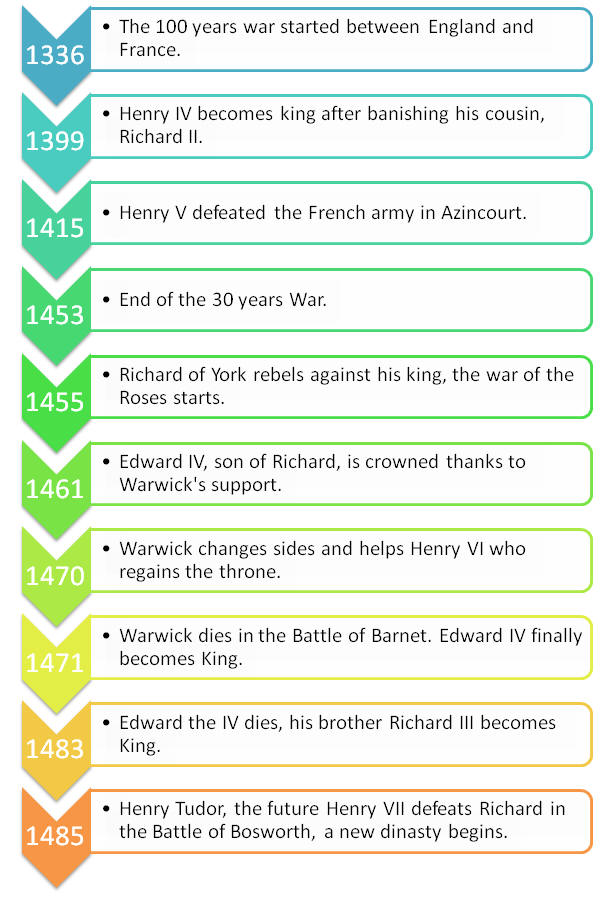
He grew up to be a weak and unpopular king, and one of his actions was to send his cousin Henry into exile. His oldest son, known by his nickname " The Black Prince" died first, and the throne passed to the Black Prince's son, Richard, who became King Richard II of England in 1377 although he was only ten. King Edward III had many sons, as is shown in the family tree below. These pictures are from the Talbot Shrewsbury Book. Henry VI, Margaret of Anjou and Richard, Duke of York. The houses were named after the cities of Lancaster and York, but neither city played a big role during the war, and both houses owned land all over England and Wales. At the time, they were called the "Civil Wars". However, the red rose symbol was not used until after the wars had ended, and most soldiers fought under the symbol of their local nobleman. The name of the Wars of the Roses, which was first used only in the 19th century, comes from the white rose symbol for the House of York and the red rose symbol for the House of Lancaster. Also, England's defeat in the Hundred Years' War in France, economic problems after the war and problems with the feudal system of government were other causes. King Henry VI was seen as a poor ruler by many of his people because of his lack of interest in politics and his mental illness (his French queen, Margaret of Anjou, often made key decisions instead). The wars began for several reasons, and historians have debated the one that was most important. Both houses were branches of the Plantagenet royal house and were related through King Edward III. The Wars of the Roses (1455–1487) were a series of civil wars fought over the throne of England between supporters of the House of Lancaster, the Lancastrians, and supporters of the House of York, the Yorkists.

Strengthening of the English monarchy under the Tudors*.But he was in for the rudest of awakenings. This episode was edited by Joseph Knight and produced by Rob Weinberg. Listen to Henry III: England’s Longest Reigning King here: you’re enjoying this podcast and are looking for more fascinating Medieval content then subscribe to our Medieval Monday newsletter here. He's been monarch for 42 years and might have been looking forward to a quieter twilight to his reign. Henry III 1258-1272: Reform, Rebellion, Civil War, Settlement picks up the story when Henry is 51 years old. After speaking to Gone Medieval in April 2022 about the first volume of his magisterial biography of Henry III, David Carpenter promised Matt Lewis that he would pay the podcast a return visit when the second volume came out.


 0 kommentar(er)
0 kommentar(er)
